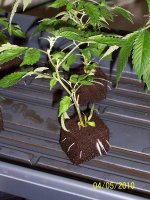MAXICROP !!!
MAXICROP !!!
 Hi All! This is so Awsome........Finally!!! All you have seen the
Hi All! This is so Awsome........Finally!!! All you have seen the
LIGHT!!!!!! I've been saying Maxicrop for years to all I've spoke to,emailed, blogs, posts, forums etc...etc...Started using Maxicrop in 1976......Have house plants that are 14+ years old and fed only with
You guessed it! MAXICROP LIQUID SEAWEED!!!!! Have you been to a
beach and noticed how all vegitation looks NICE!!! And the smell in the air is salt and seaweed........Nature is so wonderful!!! Well, Grape
fruit/Haze is a strain that takes forever to root,for clones,so soak
Rapidrooters is Maxicrop and use Clonex, and spray cuttings with Maxi-
crop, put in dome, and place under flouros 24hrs, usually takes 14 days
or longer, but with Maxicrop, it took 8 days Follow the label instructions for cuttings/seedlings.....see this pic:::
MAXICROP !!!
 Hi All! This is so Awsome........Finally!!! All you have seen the
Hi All! This is so Awsome........Finally!!! All you have seen theLIGHT!!!!!! I've been saying Maxicrop for years to all I've spoke to,emailed, blogs, posts, forums etc...etc...Started using Maxicrop in 1976......Have house plants that are 14+ years old and fed only with
You guessed it! MAXICROP LIQUID SEAWEED!!!!! Have you been to a
beach and noticed how all vegitation looks NICE!!! And the smell in the air is salt and seaweed........Nature is so wonderful!!! Well, Grape
fruit/Haze is a strain that takes forever to root,for clones,so soak
Rapidrooters is Maxicrop and use Clonex, and spray cuttings with Maxi-
crop, put in dome, and place under flouros 24hrs, usually takes 14 days
or longer, but with Maxicrop, it took 8 days Follow the label instructions for cuttings/seedlings.....see this pic:::




